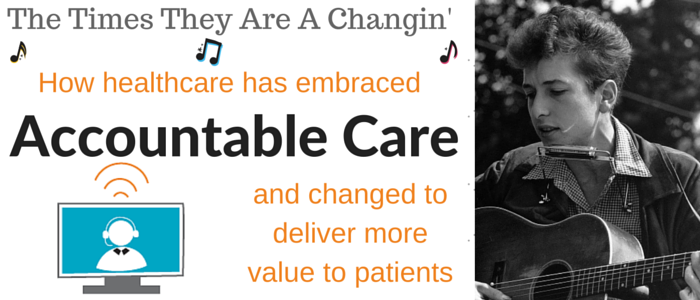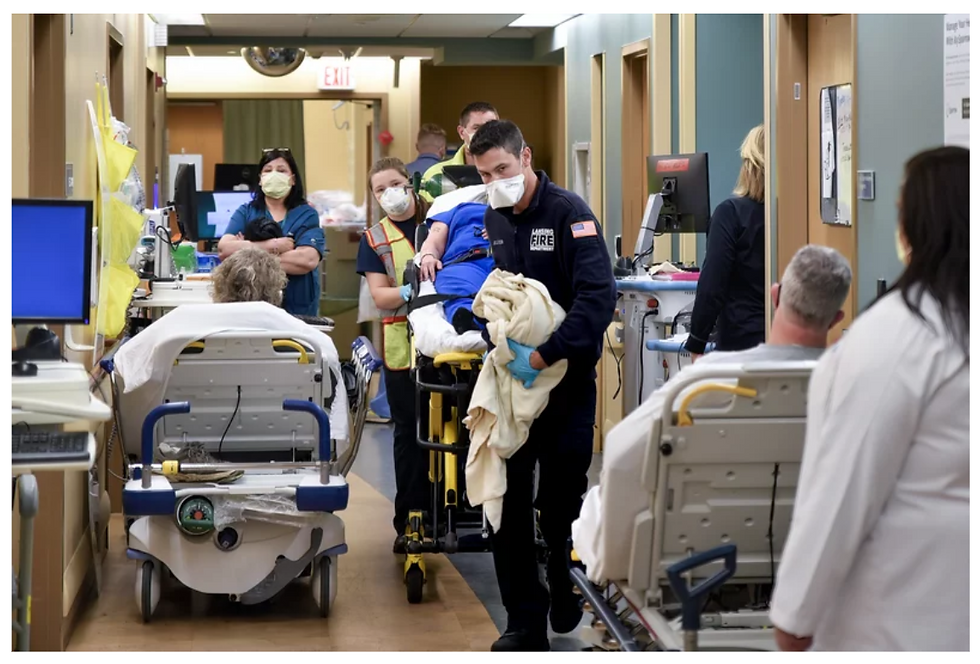Healthcare Changes Promote Accountable Wound Care and Provide Patient Value
- Joe Ebberwein

- Jul 8, 2016
- 3 min read
Updated: Mar 30, 2021

After almost 30 years in healthcare serving as Controller and Chief Financial Officer (CFO) for multiple home health agencies, the one thing I know to be true about accountable wound care is that “the only constant is that change is coming.”
When Centers for Medicare and Medicaid Services implemented Diagnosis Related Groups (DRGs came from Yale University in the 1970s) in the acute care setting in the early 1980s, it rocked the world of every hospital administrator and CFO. When CMS implemented the HHRG (Home Health Resource Group) in the home health industry in 2000, it was only a matter of a few years before one third of the industry shut its doors or was acquired by companies with the scale to adapt to the new payments.
There is a definite theme that has emerged over the last decade, and it should be no surprise: CMS (on behalf of those they serve, the U.S. taxpayers) has thrown down the gauntlet -- they are only going to pay for care that produces value for the patient.
In home health and accountable wound care, we adapted to the change by embracing technology in the form of remote patient monitoring. To implement this took a monumental change in practice and in culture. Change is hard, but clinicians will eventually embrace change when they see improved outcomes for their patients. CFOs will embrace change if they see increases in efficiencies and lower costs. These concepts are at the foundation of CMS’ shift from volume to value.
Prior to 2011, the majority of Medicare payments to providers were related to volume, rewarding providers based on how many tests they ran, how many patients they examined, or how many billable codes they produced, regardless of whether these activities improved clinical outcomes for the patient. Whether you favored the Affordable Care Act or not, by 2014, an estimated 20 percent of Medicare reimbursements had shifted to a form of value-based reimbursement, directly linking a provider’s reimbursements to the health of its patients.
The goals of CMS are aggressive:
Payment for Value
30 percent of Medicare payments in alternative payment models by the end of 2016 (CMS announced this goal had been met ahead of schedule in early 2016)
50 percent of Medicare payments in alternative payment models by the end of 2018
Quality Fee for Service
HHS has also set a goal of tying 85 percent of all Medicare fee-for-service to quality or value by 2016
By 2018, that goal rises to 90 percent.
These will be achieved through investment in alternative value-based payment models such as Accountable Care Organizations (ACOs), primary and specialty medical home models, payment models bundled for episodes of care, and integrated care demonstrations for beneficiaries that are Medicare or Medicaid enrollees.
How does this impact wound care delivery?
Patients with wounds, whether it be a complex wound related to surgical complications, a diabetes-related ulcer, a facility acquired pressure ulcer, a new ostomy, or any of the myriad of other wounds, must be managed across care settings and be provided accountable wound care. The care of the patient should reflect the latest evidence-based treatments with a focus on measurable outcomes: clinical outcomes, financial outcomes, and patient satisfaction -- not on volume of billable procedures.
Access to expert care is critical to a value-based model. Adoption of technology creates the opportunity to improve access to expert care wherever the patient is - acute care, long-term care, home health, self-management at home, palliative care, and hospice care. Telehealth technologies, mobile health apps, and communication channels are all now ubiquitous in the delivery of care.
In addition to access, cohesive care coordination across provider settings is foundational. A patient’s wound care medical record and treatment plan should be attached to the patient, not the provider. Seamless integration of critical information leads to better care, better outcomes and lower cost.
Corstrata increases access to certified wound care experts. We facilitate the seamless transition of wound care patients from one care setting to the next, and collaborate with providers to ensure that patients receive evidence-based care. Our virtual wound management model for accountable wound care produces better clinical outcomes, lower spend per patient and increased patient satisfaction -- learn more about the benefits of virtual wound care in our infographic.





Comments